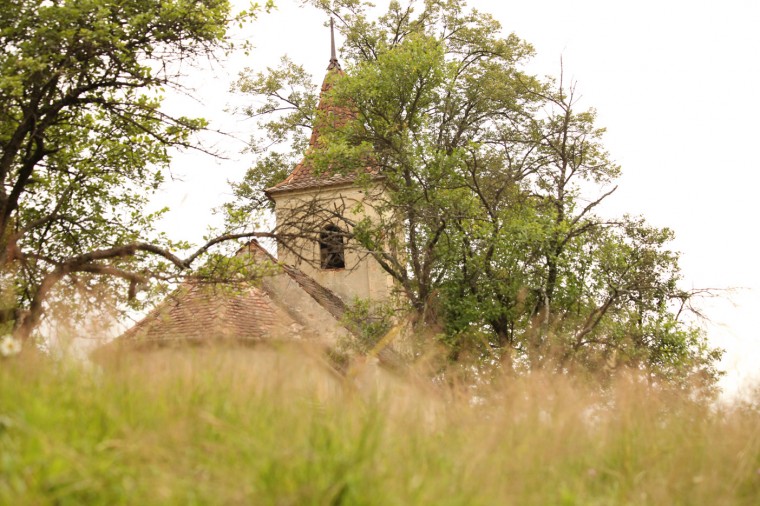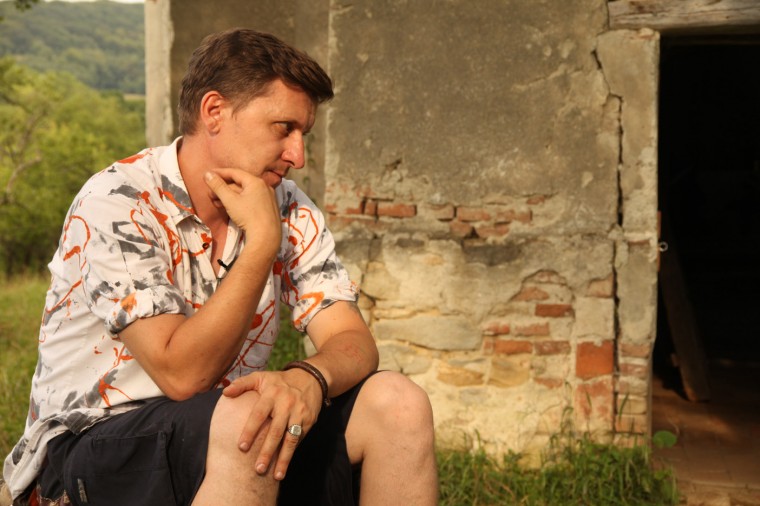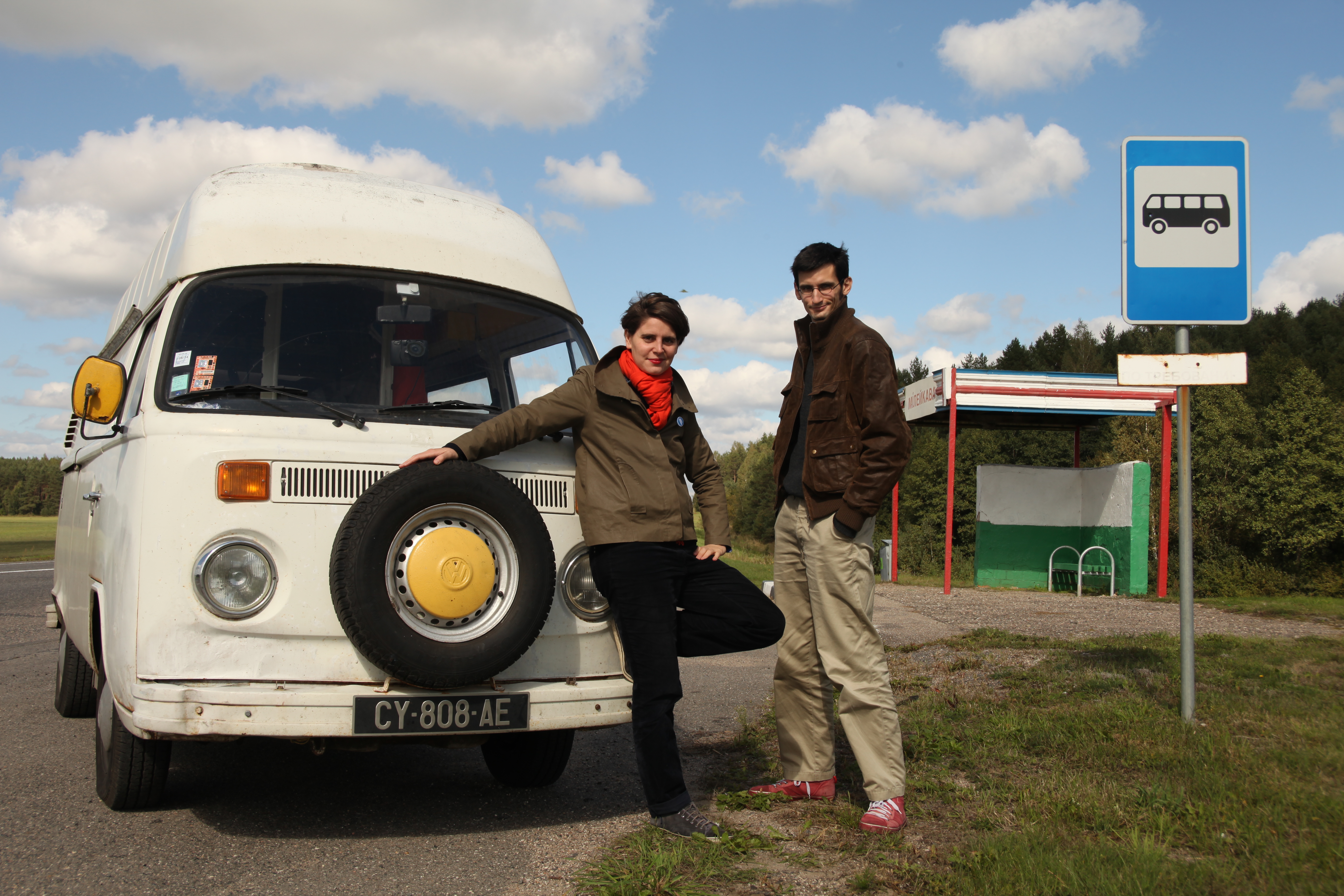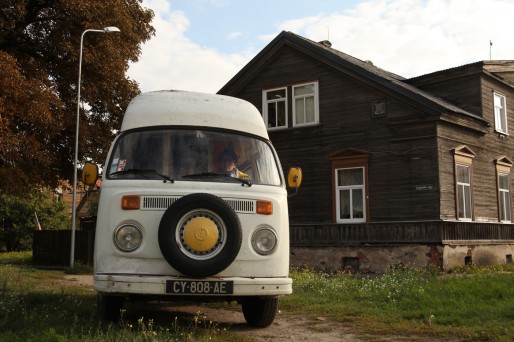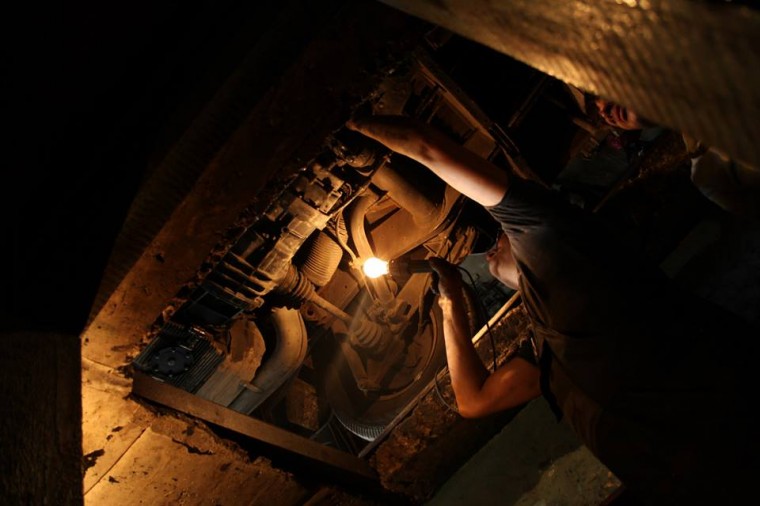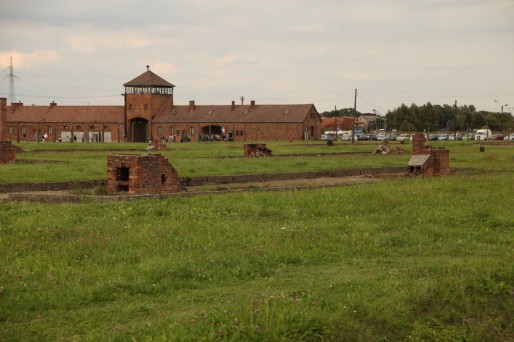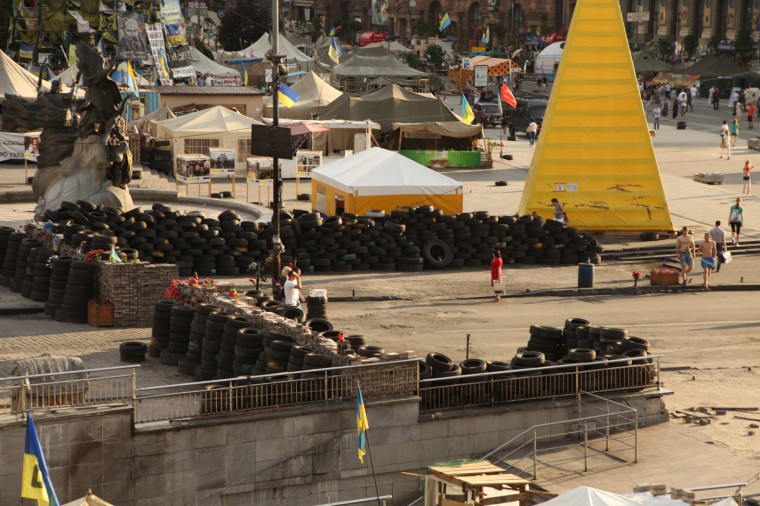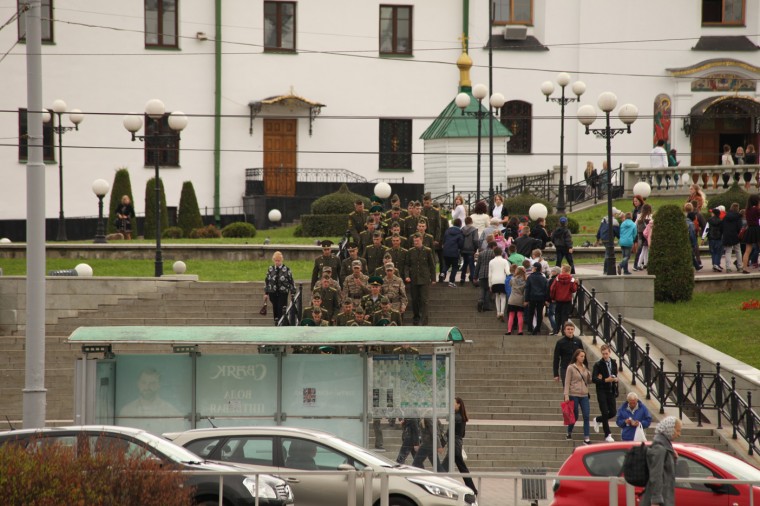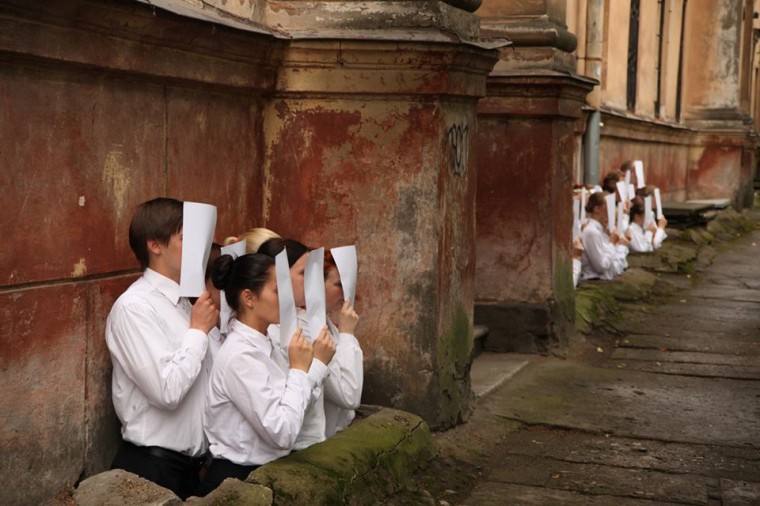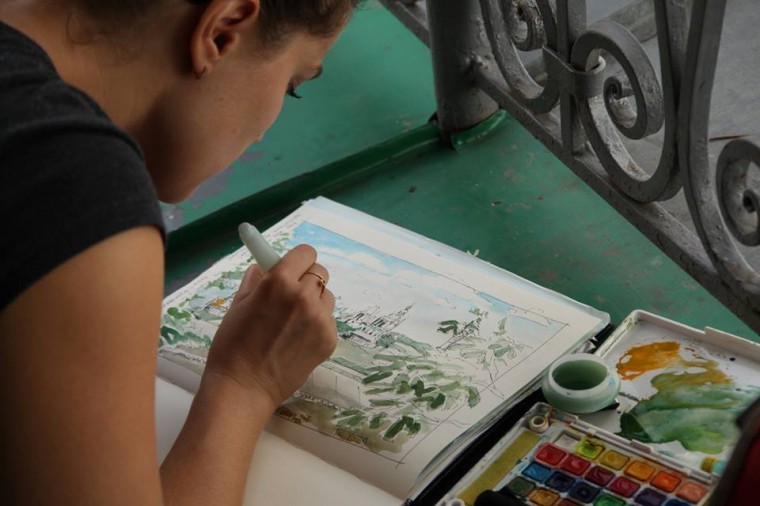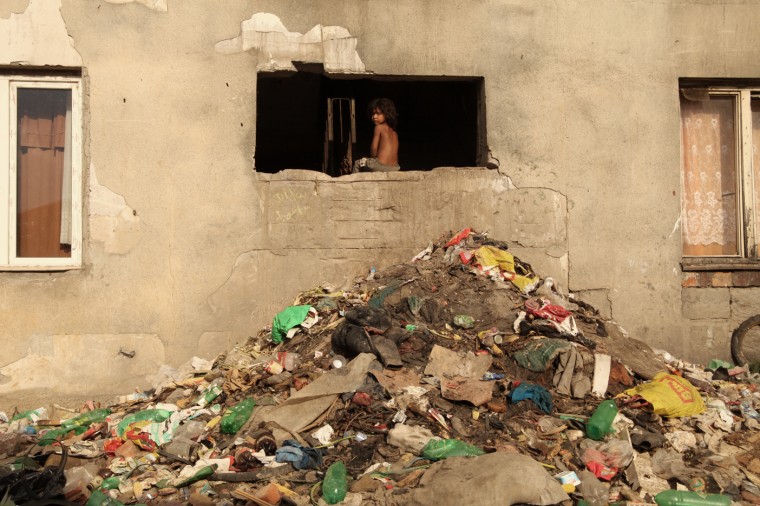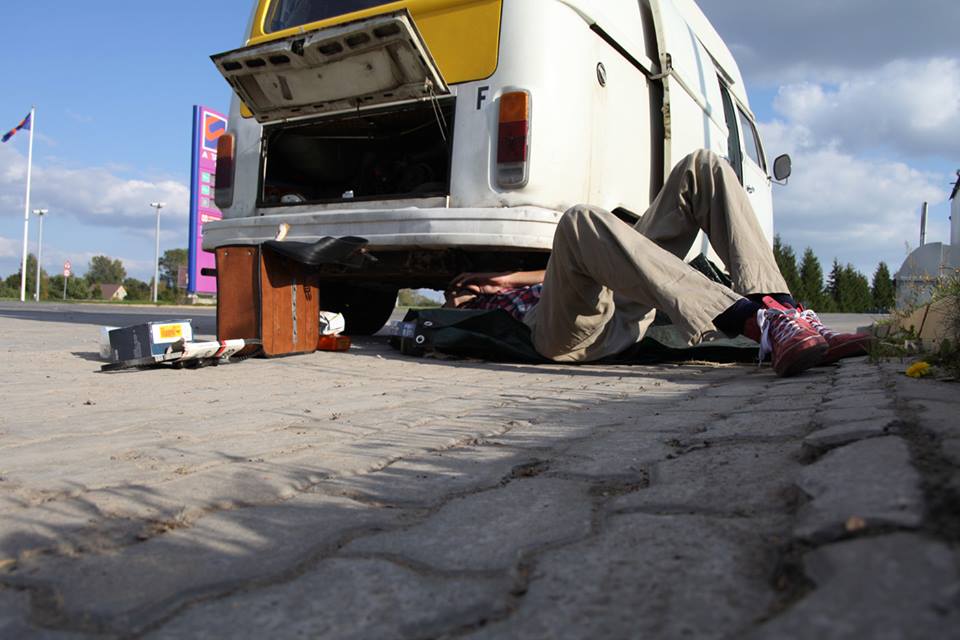Cette semaine, l’équipe du Bulli Tour Europa vous emmène dans l’une des régions les plus mystérieuses d’Europe : la Transylvanie. Au-delà des mythes qui pullulent autour de ce nom, découvrez le village fantôme d’Engenlthal, l’un des derniers vestiges de la population saxonne de Transylvanie, décimée dans la première moitié du XXe siècle.
La Roumanie compte une centaine de villages fantômes…et autant de patrimoine menacé.
Au milieu de ce village oublié de Transylvanie, nos reporters ont rencontré un artiste, gardien de la mémoire des lieux. Tara (von Neudorf), artiste roumain reconnu pour ses œuvres engagées et contestataires, vit en ermite depuis 4 ans dans le village d’Engenlthal en Transylvanie. Ce village accueillait autrefois plusieurs familles saxonnes, des Roumains d’origine allemande, qui ont quitté la région après la chute de communisme. Tara (von Neudorf) a décidé de faire usage de ses talents artistiques pour restaurer l’église luthérienne du village fantôme.
Tara (von Neudorf) passe un quart de son temps à Engenlthal. Ses expositions à Paris, Bruxelles ou Cracovie, et son travail dans l’un de ses autres ateliers en Roumanie l’occupent le reste de l’année.
Lors de la visite de ce lieu à la spiritualité toujours palpable, Tara (von Neudorf) raconte la vie des derniers Saxons de la région et l’histoire de l’église saxonne protestante d’Engenlthal, dans laquelle il a vécu deux ans et a peint l’histoire des Saxons de Transylvanie, l’histoire de leur disparition. Il raconte pour nous cette histoire : « Je dirais que leur histoire à un lien avec la Seconde Guerre mondiale, parce qu’ils ont rejoint les Waffen-SS pour 90% de la jeune génération de la communauté saxonne. Pour cette raison, ils ont été jetés dans une sorte d’Apocalypse communiste, après la guerre. Ils furent expropriés ou envoyés en camps de travail en Russie. Et finalement, ils décidèrent de partir. Ils en avaient assez de toute cette pression politique du Parti communiste durant ces 45 ans passés ici. C’est ici que se trouvent les origines de la destruction de la communauté saxonne pendant la Seconde Guerre mondiale. » C’est à la découverte de ce village fantôme que nous vous invitons cette semaine.
La Transnistrie a tout d’un vrai pays: un drapeau (avec l’emblème soviétique de la faucille et du marteau), sa monnaie, son parlement et son président… mais pas de légitimité aux yeux de la communauté internationale.
Retrouvez dans la semaine à venir, les péripéties du Bulli en Transnistrie, cette région séparatiste de la Moldavie, un « non pays » glorifiant encore les héros du communisme russe.
Chronicle of week 10 : Transylvania, the story of a disappearance
This week the Bulli Tour Europa team takes you to one of the most mysterious areas in Europe: Transylvania. Beyond the myths surrounding its name, we discover the ghost town of Engelthal, one of the last vestiges of the Saxon population of Transylvania, decimated during the first half of the 20th century.
Romania is home to about a hundred ghost towns… the patrimony is just as threatened.
In the heart of this forgotten Transylvanian village our reporters met an artist, the keeper of areas’ memory. Tara (von Neudorf), a Romanian artist known for his works that are both engaging and dissenting, has living the life of a recluse for four years in the village of Engelthal in Transylvania. This village once welcomed several Saxon families, Romanians of German origin, who left the region after the fall of Communism. Tara (von Neudorf) decided to make use of his artistic talent to restore the ghost town’s Lutheran church.
Tara (von Neudorf) spends a quarter of his time in Engenlthal. His displays in Paris, Brussels, Cracow, and his work in one of the other studios in Romania take up the rest of the year.
During a visit to this place where spirituality is still palpable, Tara (von Neudorf) speaks of the lives of the region’s last Saxons and the history of the Protestant Saxon church of Engelthal, where he lived for two years and where he painted the story of the Saxons of Transylvania, the story of their disappearance. It is that story that he tells of: “I would say their story has ties with World War II, because 90% of the young generation of the Saxon community joined the Waffen-SS. Because of this, they were thrown into a sort of communist Apocalypse after the war. They were banished from their homes or sent to Russian work camps. And finally the decided to leave. During the 45 years spent here, they had enough of all the political pressure of the Communist Party. It is here that the origins of the destruction of the Saxon community during WWII are located.” This week we invite you to discover this ghost town.
Transnistria has all the signs of a real country: a flag (with the Soviet emblem of the hammer and sickle), its own currency, a parliament and a president… but it is not recognized as a legitimate country in the eyes of the international community.
You can also find the Bulli’s adventures in Transnistria, the separatist region of Moldova, a “non-country” that still glorifies the heroes of Communist Russia.
Chronik der 10. Woche: Transsilvanien – eine Geschichte des Verschwindens
Diese Woche nimmt Sie das Bulli Tour Europa Team mit zu einem der mysteriösesten Orten Europas: Transsilvanien. Neben den Mythen, die diesen Namen umranken, entdecken wir die Geisterstadt Engelthal, wo sich die letzten Spuren der sächsischen Bevölkerung Transsilvaniens findet, welche in der ersten Hälfte des 20. Jahrhunderts stark dezimiert wurde.
Rumänien ist ein Land mit ungefähr 100 Geisterstädten…ein gruseliges Erbe.
Im Herzen dieser vergessenen, transsilvanischen Stadt haben unsere Reporter einen Künstler getroffen, den Bewahrer der Erinnerungen dieser Umgebung. Tara (von Neudorf), ein rumänischer Künstler, der bekannt ist für seine Arbeit, die gleichzeitig engagiert und andersdenkend ist, hat vier Jahre das Leben eines Einsiedlers geführt in Engelthal in Transsilvanien. Dieses Dorf beherbergte einst mehre sächsische Familien, Rumänen deutschen Ursprungs, die ihre Region nach dem Fall des Kommunismus verlassen hatten. Tara (von Neudorf) entschied sein künstlerisches Talent zu nutzen und die lutherische Kirche der Geisterstadt zu restaurieren.
Tara (von Neudorf) verbringt ein Viertel des Jahres in Engelthal. Seine Ausstellungen in Paris, Brüssel, Krakau und die Arbeit in seinen anderen Ateliers in Rumänien beschäftigen ihn das restliche Jahr.
Während des Besuches jenes Ortes, an dem Spiritualität immer noch greifbar ist, spricht Tara (von Neudorf) über das Leben der letzten lebenden Sachsen in der Region und der Geschichte der protestantischen sächsischen Kirche von Engelthal. Zwei Jahre lebte er dort und malte die Geschichte der Sachsen von Transsilvanien, eine Geschichte des Verschwindens. Die Geschichte, die erzählt, ist folgende: „ Ich würde sagen, ihre Geschichte ist verknüpft mit der des zweiten Weltkriegs, da 90% der jungen Generation in dieser sächsischen Gemeinschaft bei der Waffen-SS waren. Aufgrund dessen gerieten sie nach dem Krieg in eine Art „kommunistische Apokalypse“. Sie wurden von ihrem Zuhause verbannt oder in russische Arbeitslager geschickt, also entschieden sie sich schließlich zu gehen. 45 Jahre verbrachten sie, um dem politischen Druck der kommunistischen Partei zu entgehen. Genau hier sind die Beweise für die Zerstörung der sächsischen Gemeinschaft während des zweiten Weltkriegs zu finden.“
Und so laden wir Sie diese Woche ein, diese Geisterstadt zu erkunden.
Transnistrien hat alle Anzeichen für einen richtigen Staat: eine Flagge (mit dem sowjetischen Emblem von Hammer und Sichel), seine eigene Währung, ein Parlament und einen Präsidenten…Aber es wird von der internationalen Gemeinschaft nicht anerkannt.
Es gibt auch noch mehr Informationen rund um die Abenteuer des Bullis in Transnistiren, abgespaltenen Regien Moldawiens, einem “Nicht-Land”, das noch immer die Helden des kommunistischen Russlands anpreist.

